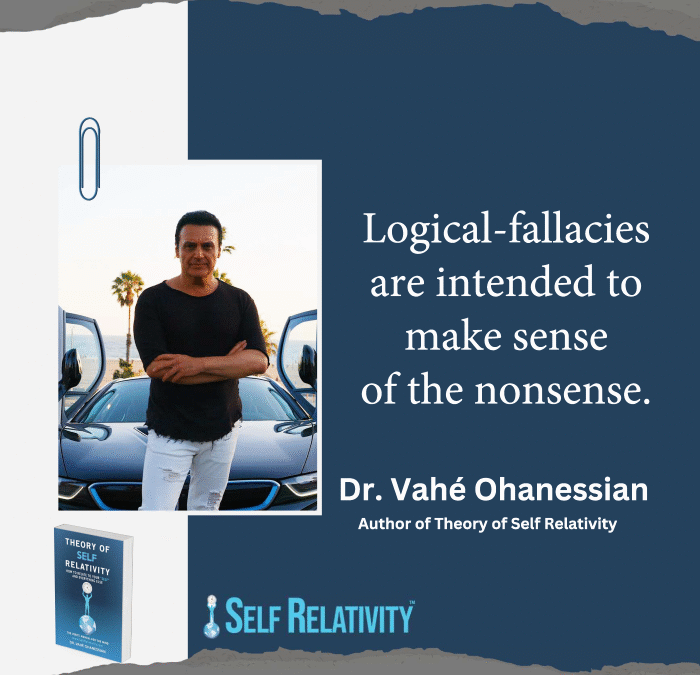
Facts vs Feelings
May 25, 2022
Feelings vs Thoughts
June 26, 2022“Logical-fallacies are intended to make sense of the nonsense.”
A fallacy is rooted in deception and it is intended to make something appear better than it really is. A fallacy is commonly used in place of valid reasoning in order to communicate a point with the intention to persuade. This persuasion could either be directed towards others or it can be self-directed. Logical-fallacies are commonly associated with an appeal to a justification and they are generally associated with an interpretation rather than an objective evaluation of the facts.
Fallacies appear to have logic, reason, and facts behind them but when examined closely, the logical and factual foundations of fallacies begin to fall apart. Fallacies are commonly founded upon the conscious or nonconscious intent to deceive. Although logical-fallacies could be rooted in ignorance, Theory of Self-Relativity recognizes logical-fallacies as a means for conscious but more commonly nonconscious deception. Fallacies are generally arguments and reasonings that are intended to support an already preferred conclusion; instead of using fact and reason-based arguments in order to reach a conclusion.
Logical-fallacies are common in self-deception and in relationships with others and they are often based on emotional-reasoning rather than factual-thinking. Such fallacies are also the foundation of many ideological group systems such as cults, motivational and leadership teachings; whereby emotion-based beliefs are encouraged to lead one’s thinking rather than allow critical-thinking to guide decisions and actions. Because it is easier to persuade and win over the weak and the susceptible via emotions, especially when facts would contradict what is being touted.

